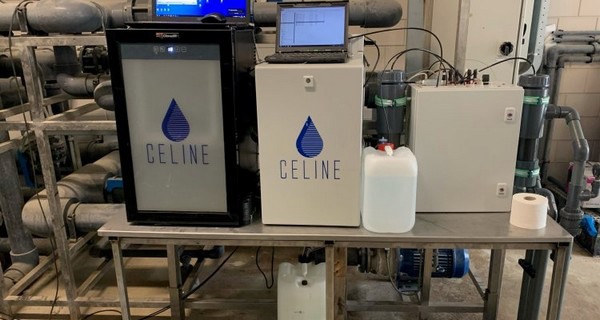Growers who want to have their supply and drainage water tested have to collect a sample and send it to a laboratory. They then have to wait a few days for the result. For these reasons, this operation is done only every 7 – 14 days. By measuring the water with an ion-specific meter in-situ, the result is known in about an hour, and the grower can therefore make immediate adjustments if necessary. In addition, the creation of data in-situ leaves space for future automation of the adjustments. The Business Unit Greenhouse Horticulture and Flower Bulbs of Wageningen University & Research are investigating the practical use of Celine, an ion-specific measuring equipment, and the benefit of a so-called ‘ion-specific cultivation.’

A few years ago, The Sensor Factory launched the Celine, a tool for conducting ion-specific measurements which uses the technique of capillary electrophoresis. WUR has created a consortium to investigate how the Celine can best be used and improved. WUR aims to collect enough information to compare ion-specific cultivation (ISC) (daily adjustment per ion) versus conventional practice (CC) (daily adjustment on EC) and to prove the higher efficiency of the former. ISC is believed to reduce ion fluctuations in the root environment when compared to CC, which can ultimately increase the yield by 5%.
Laboratory tests
Laboratory tests were first conducted to prove the effect of ion fluctuations on yield. WUR has then run a comparing trial between ISC and CC, which, however, did not show any significant gain for ISC due to technical failures in applying the daily adaptations to ISC. In fact, to apply daily adjustment, it is necessary to hold a fertilizer injection unit. For this reason, the investigation followed in 2021 at the vegetable growing company Royal Pride, and the Celine is currently being tested by the tomato grower Kwekerij Lijntje, where both growers own fertilizer injection units.
The study mainly looks at the macronutrients NH4, K, Ca, Mg, Na, NO3, Cl, SO4, PO4, and HCO3. Both the drain water and the irrigation water are examined. That goes through a pipe to the Celine. The measurement is therefore automatic; the grower, therefore, does not need to take samples. During the research, the data about the ions are loaded into a WUR’s nutrient recommendation program (NRP), the BAB (Bemesting Advies Basis), which elaborates the data from Celine and suggests the daily adjustments to the grower.
Autonomous fertigation
The use of an ion-specific meter in-situ in combination with an NRP would especially be of interest for those areas where less knowledge is available about fertilization and laboratory analysis are too slow or too expensive. Instead, for more modern greenhouses, this combination is the first step towards autonomous fertigation systems.
 For more information:
For more information:
Wageningen University & Research
www.wur.nl
